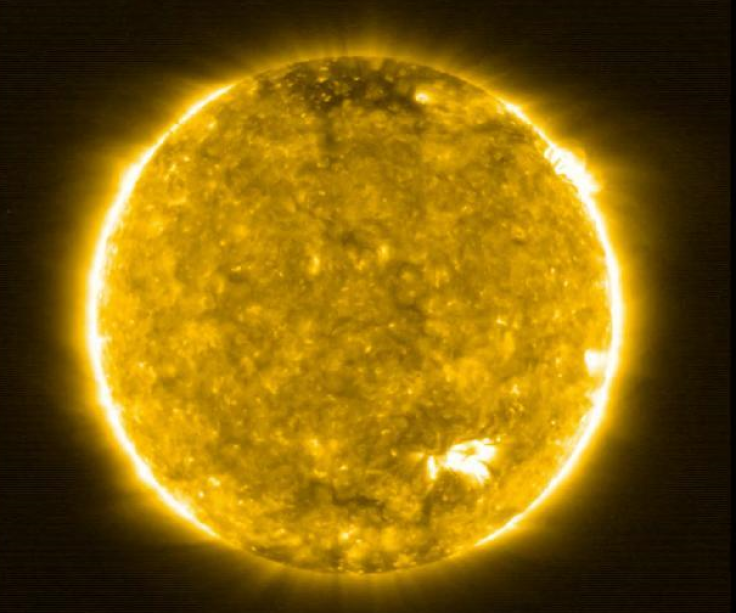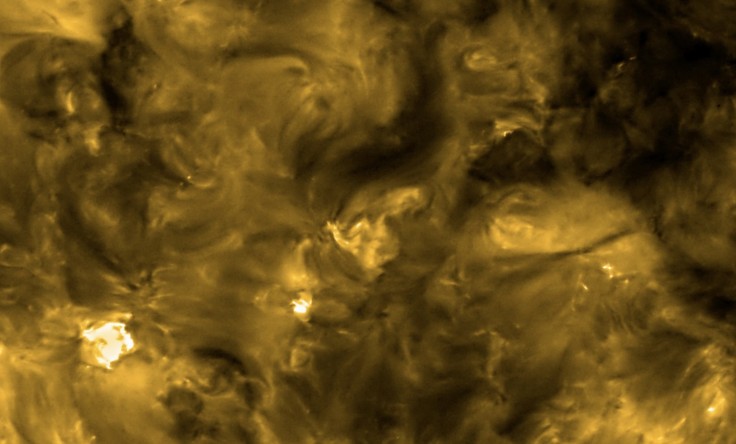The first Solar Orbiter images have been publicly shared by both NASA and ESA on May 30, 2020.
The High Resolution Imager in the EUV (HRIEUV) telescope captured a high-resolution image from the Extreme Ultraviolet Imager (EUI) onboard the European Space Agency's Solar Orbiter spacecraft.
The appearance of the Sun at a wavelength of 17 nanometers, which would be in the extreme ultraviolet region of the electromagnetic spectrum, is depicted in these images. The Sun's upper atmosphere, known as the corona, can be visibly seen in these magnificent images taken at a temperature of approximately one million degrees.
The First Solar Orbiter Images
As NASA reports, on May 30, 2020, the HRIEUV telescope captured a slew of high-resolution images from the Extreme Ultraviolet Imager (EUI) on the Solar Orbiter spacecraft, which was operated by the European Space Agency and NASA.
There are a plethora of small flaring loops, bright spots that erupt, and dark, moving fibrils visible in these images.

The images of the sun reveal certain "campfires" surrounding it. In capturing the images, the Solar Orbiter was approximately halfway between the Earth and the Sun, putting it closer to the Sun than any other solar telescope had ever been before in its history.
This term refers to the prevalent features of the solar surface that have been revealed for the first time by these images and have been given the term "campfires." As solar theories suggest, these are omnipresent miniature eruptions that could have been attributed to the high temperatures of the solar corona as well as the origin of the solar wind.

This became a rare opportunity for ESA to be able to observe features in the solar corona that were only about 250 miles across.
According to ESA, the high-resolution imager HRILYA telescope, which is a component of the Extreme Ultraviolet Imager (EUI) instrument on the European Space Agency's Solar Orbiter spacecraft, was used to capture these images of the Sun.
As stated by the agency, "The images show the solar surface at a particular ultraviolet wavelength that is produced by hydrogen, the most abundant chemical element in the Universe." The wavelength is known as Lyman-alpha and has a wavelength of 121.6 nm.
NASA and ESA's Solar Orbiter Mission
The Solar Orbiter mission, which was launched by the European Space Agency on February 10, 2020, made its first close approach to the Sun in mid-June, capturing breathtaking images of our nearest star.
The orbiter has six remote-sensing instruments that capture the Sun and its surroundings and are carried aboard the Solar Orbiter. As a bonus, it also has four in-situ instruments that keep an eye on the environment around the spacecraft while it's in space.
Daniel Müller, ESA's Solar Orbiter Project Scientist, stated that witnessing the results gathered by the Solar Orbiter mission is just the beginning.
"Solar Orbiter has started a grand tour of the inner Solar System, and will get much closer to the Sun within less than two years. Ultimately, it will get as close as 42 million km, which is almost a quarter of the distance from the Sun to Earth," said Müller.
The Solar Orbiter is a space mission that is the result of an international collaboration between the European Space Agency and NASA.
Holly Gilbert, Director of the Solar Orbiter Project Scientist at NASA, stated that these first data are already demonstrating the power of a successful collaboration between space agencies as well as the utility of a diverse set of images in unraveling some of the Sun's mysteries.
There were contributions to the science payload and/or the spacecraft from nineteen European Space Agency Member States, as well as from the National Aeronautics and Space Administration (NASA). The satellite was built in the United Kingdom by the prime contractor, Airbus Defence and Space.
Related Article: NASA Announces Earendel: The Farthest Star Ever Captured by Hubble









